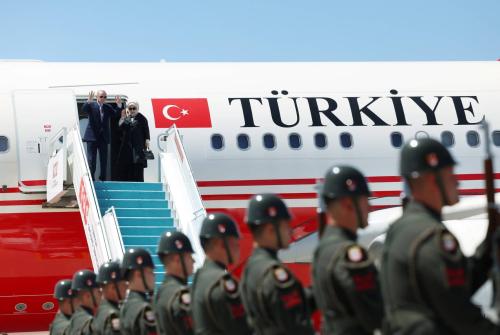Thank you, Anthony, and thanks to ASPI and Peter Abigail for inviting me here, it’s great to be here. Ashley Tellis yesterday made a comment about the rise of Asia and its technology. I’m afraid that I may unwittingly illustrate that following Chung Min, who had all of these lovely colour slides and moving pieces. I don’t even know how to use PowerPoint, so I’ll do the Asian thing and apologise for that – but I’ll bring a couple of thoughts about the Middle East, even if I can’t show you what they look like.
The title of this panel is, ‘Crescent of Crisis’, and maybe I’ll start by just a word on that. Last year we ran a project and wrote and edited a book, a volume called The Crescent of Crisis in which we brought together some top specialists on the Middle East. We met in Paris and we looked at Israel, Lebanon, Syria, Iran, Iraq, Afghanistan, Pakistan – it really is a geographic arc of crisis, to go back to Brzezinski’s term of nearly 30 years ago – and assessed this question of prospects for the greater Middle East. Since we met in Paris we called it the ‘Croissant of Crisis Project’ – but frankly that was about the only thing funny about it because in all seriousness the prospects did not seem very good at the time, and I’m afraid I’m here to say today that they don’t look terribly good now.
What I will try to do is begin with a snapshot of what the Middle East looks like now and why I suggest that the prospects aren’t very good. If you will permit, I will do that from a US point of view, which I think is legitimate, partly because the US plays such a central role in what’s going on in the Middle East, and partly because maybe I have a bit more light to shed on that coming, as I just have, from Washington.
The Brookings Institution is committed to quality, independence, and impact.
We are supported by a diverse array of funders. In line with our values and policies, each Brookings publication represents the sole views of its author(s).



Commentary
Crescent of Crisis: Prospects for the Greater Middle East
September 27, 2006